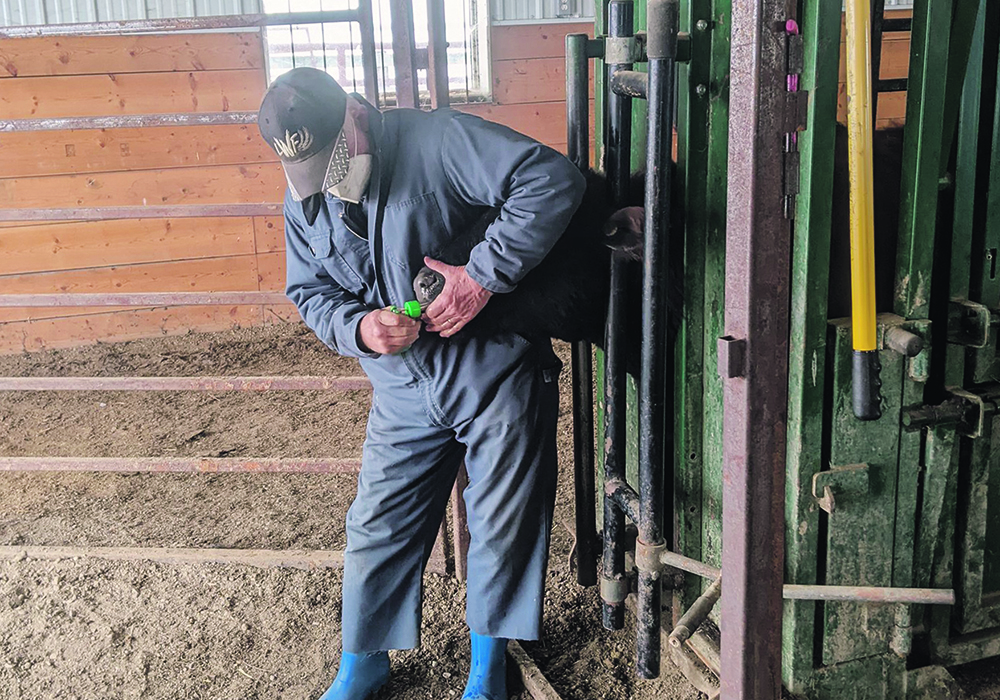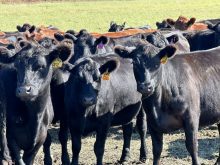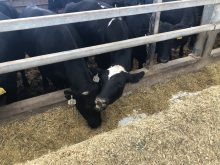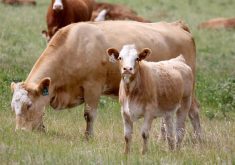Glacier FarmMedia – A research project underway at Manitoba Beef and Forage Initiatives (MBFI) north of Brandon might help cattle operations across the Prairies take their replacement heifer game plan to the next level.
MBFI is one of three western Canadian sites feeding data into a four-year study aimed at evaluating how various novel technologies might improve reproductive efficiency. The technologies involved are meant to assess replacement heifers’ fertility, conformation, temperament, productivity and performance.
Under test are rumen boluses, data collection using artificial intelligence, facial recognition technology, GPS eartags and several other tools.
Read Also

Petition launched over grazing lease controversy
Battle continues between the need for generation of tax revenue from irrigation and the preservation of native grasslands in southern Alberta rural municipality.
“It’s a significant cost for a cow-calf operation to develop those replacement heifers, have them last and be productive for at least eight to 12 years in your herd,” said MBFI executive director Mary-Jane Orr.
It could save producers a lot of headaches if they can quickly single out animals that are worth that investment.
The study compares standard methods for evaluating reproductive performance against the results of newer technologies.
“The idea is to put the data behind what methods are going to be most impactful for identifying those young female calves that are going to be productive in a herd,” said Orr.
Susan Markus of Lakeland College in Alberta is spearheading the study. Other than MBFI, host sites have been organized at Markus’s own college as well as two sites in British Columbia’s interior: Thompson Rivers University in Kamloops and Buck Lake Ranch near Beaverdell.
MBFI joined the project almost by accident after Orr asked Markus about novel technologies she felt Manitoba should test.
“Then, through our conversation, as I was describing the data we were already collecting on our animals for this demonstration project, it became clear that what we were already doing could be leveraged into becoming another site for a research study that she had recently been funded for.”
Insider’s view
The Moonsyst Smart Rumen Bolus, a cylindrical bolus placed in a cow’s rumen, is one device under the microscope.
It was originally developed in Europe for the dairy sector, and the company has pitched the internal sensor as a maintenance-free monitoring system that sends real-time data to a farmer’s mobile device or computer. Possibly useful information includes rumen temperature, pH, water intake and animal movement.
Analyzed through AI, data can be used to identify illness early, allowing for quick treatment and reduced antibiotic use. It can also inform a producer when animals are about to calve.
For the reproductive efficiency study, that same data can extrapolate when an animal will come into heat and, if the farmer is artificially inseminating, identify the best time to do that.
“It’s a great health monitoring tool,” said Orr. “But it is also proposed to provide information about when these heifer calves were coming into their first heat cycles and whether they’re consistently going through heat cycles before exposure to breeding.”
The device is administered using the same bolus gun that a veterinarian or producer might use to give medication. The company says the silicone coating over the bolus protects the device from the animal’s stomach acid, and it comes with a battery designed to last six years or more.
Facial recognition
OneCup AI’s BETSY, marketed by the company as “the world’s first AI ranch hand,” is another technology under test.
BETSY, or Bovine Expert Tracking and Surveillance, combines remote cameras with artificial-intelligence-driven biometric recognition to keep tabs on each animal. The system tracks feed intake and growth and notes behaviour and symptoms of illness like coughing or lameness.
“It is being tested to see if it can be used to identify different behaviours that can then be used to recognize individuals that are consistently coming to heat cycles before their breeding season,” said Orr.
Other technologies
The study is also testing GPS ear tags to determine location and breeding activity; gynecological ultrasounds of the ovaries, uterus and cervix for preg checking and detecting immaturity or abnormalities; and DNA hair sampling to determine offspring parentage, heifer breed composition, hybrid vigour and genomics.
Heifers in the project are exposed to bulls at MBFI over the summer, and the research farm monitors the animals throughout pregancy and first calves. Udder scores are recorded, along with notes on mothering and weaning weight. Farther out, MBFI records whether that animal successfully rebreeds in the consecutive season.
“And then we monitor them again, all the way through to their second calf,” Orr said. ”This coming spring will be the second calf for that first cohort of heifer calves.”
Results waiting
Markus was wary of making judgments until analysis is complete, but some technologies appear useful in certain situations.
“We’re basically getting the last bits of data this year with calving season and then pregnancy rates in the fall of 2024, and then we’re going to wrap it up,” she said.
GPS ear tags showed promise. The standard use is animal and herd location, but initial results suggest they could also help predict bull libido. The amount and speed of movement in bulls seems to be predictive of how effective it will be as a sire.
“We often test our bulls for semen quality, motility and morphology using a breeding soundness evaluation … but that cannot detect their libido,” said Markus. “This piece of data from the GPS tag is giving me that libido answer, or it seems to be.”
Some of the genetic testing looked promising as well, but in all cases, return on investment would depend on specifics of the operation using the technology, Markus said.
The bolus provided valuable information, but may not have enough return on investment for most beef operations, given the price point, she added.
“I’m not saying it won’t be useful in a couple of years when they get a better algorithm specific for a beef scenario, where the animals are outside or have more room to run around compared to a confined dairy barn situation,” said Markus.
“It’s really not about ‘oh, this is so cool; we need to get everyone to use it.’ No, it’s, ‘oh, this is so cool. Does it have other applications that will make it worthwhile?”
Once all data is gathered and analyzed, researchers will submit findings for peer review. Markus expects that to be done next spring. By summer 2025, according to the current timetable, the final conclusions will be complete and published.
















